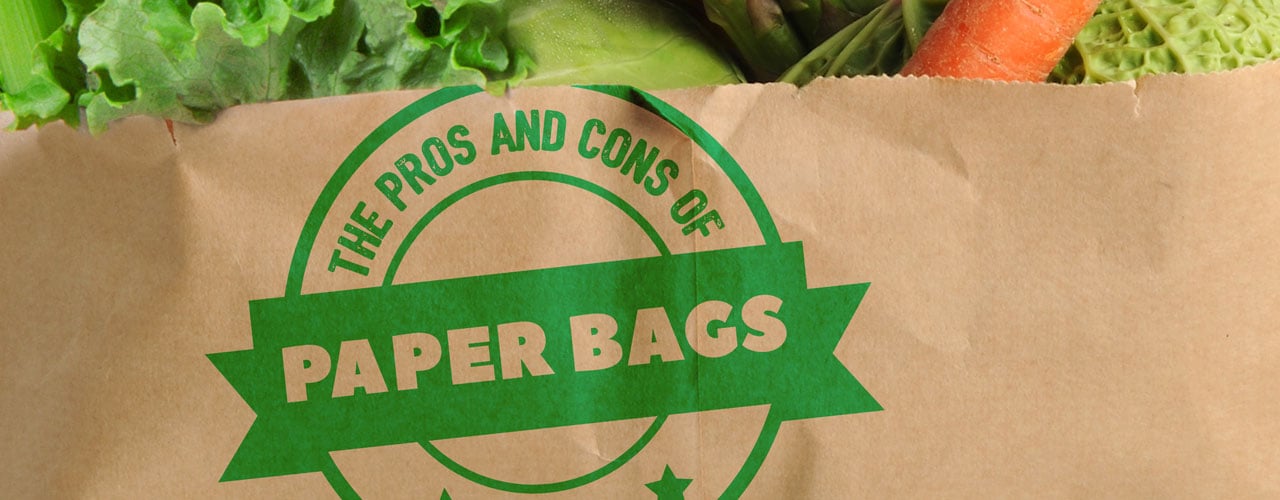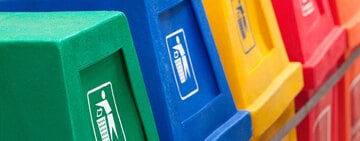The Pros and Cons of Paper Bags
Last updated on Aug 21, 2024Nora FulmerWondering whether your business should start using paper bags? While they might not be the most interesting topic in the world, understanding the differences between various types of bags and their capacities and functions can be useful for any restaurant, take-out business, or grocery store.
Shop All Paper BagsTypes of Paper Bags
With the wide range of paper bag sizes available, it can be hard to pick the product that best suits the needs of your business. Keep reading to learn more about the distinctions between different bags.

Brown vs. White Paper Bags
Paper bags generally come in two colors: brown and white. While brown paper bags are used more frequently than their white counterparts, white bags will highlight your establishment's logo and present a cleaner appearance than brown bags. Regardless of the color you choose, all of these products feature a thick construction that's resistant to tears and rips.
Which Paper Bag is Best for Your Business?
If you run a restaurant or small deli, paper lunch bags or shopping bags with handles are a useful choice for your business. Additionally, grocery stores usually need heavy weight paper grocery bags and sacks. Liquor stores can use beer, liquor, and wine bags, while merchandiser bags work well for boutiques or bookstores. If you run a produce stand or farmer's market, we recommend produce and market paper bags. Finally, paper bread and recloseable coffee and cookie bags are a great choice for bakeries and cafes.
Choosing the Best Paper Bag
The chart below provides basic information on paper bag types and capacities, along with their average length, width, and height measurements. The units used to measure the capacities of paper bags include ounces, pounds, inches, pecks, quarts, and liters. A peck is equivalent to 2 gallons, 8 dry quarts, 16 dry pints, or around 9 liters.
| Bag Type | Capacity | Length | Width | Height |
| lunch bags | 1/2 - 5 lb. | 11" | 3 - 5 1/4" | 5 - 10" |
| Grocery Bags | 2 - 25 lb. | 17" | 4 - 12" | 7 - 18" |
| Beer, Liquor, and Wine Bags | Varies | Varies | 3 - 10" | 11 - 16" |
| Baguette Bread Bags | Varies | -- | 4 - 5 1/2" | 16 - 28" |
| Produce Bags | 1/4 - 1 pk. | Varies | 6 - 8" | 8 - 10 1/2" |
| Recloseable Tin Tie Coffee Bags | 1/2 - 8 lb. | 9 3/4" | 4 - 6 1/2" | 7 - 16" |
| Merchandise Bags | Varies | -- | 6 - 21" | 9 - 24" |
Note: Length is the measurement of the base of the bag from side to side, while width refers to the measurement of the base of the bag from front to back.
Paper Bag Terminology

Believe it or not, the world of paper bags has its own set of unique terms and descriptors. Here are a few of the most important:
- Paper basis weight is the weight in pounds of one ream (500 sheets) of paper in its basic size (before being cut to specific dimensions). In other words, basis weight refers to the thickness of the paper used to construct a bag. As the basis weight increases, so does the amount of paper. A basis weight of 30-49 lbs. is referred to as standard duty, while basis weights of 50 lbs. and up are marked heavy duty.
- A gusset is an indented fold on the side or bottom of a paper bag that allows the bag to expand for greater capacity.
- Paper bags with a flat bottom design are designed to open up with a flat bottom. This is the most common bag type and is very easy to load.
- Pinch bottom design bags are designed with tightly sealed pointed bottoms, hence, they have no length measurement. These bags work well for cards, calendars, and candy.
Pros and Cons of Using Paper Bags
If you're having trouble deciding whether your business should use paper bags, consider the following important factors:
Pros of Using Paper Bags

- Paper bags are often reusable and recyclable.
- Many paper bags can withstand more pressure or weight than plastic bags.
- Paper bags present less of a suffocation risk to young children or animals.
Cons of Using Paper Bags
- Unlike their plastic counterparts, paper bags aren't waterproof.
- Paper bags are more expensive than plastic bags.
- Paper bags take up more storage space than plastic bags and are considerably heavier.
As you can see, there are both benefits and drawbacks to using paper bags. When choosing bags for your business, it is important to have enough knowledge to make an educated decision on which type is best for you. If you are looking for a classic look and feel, paper bags are a great option for your restaurant, school, catering company, grocery store, or deli.








